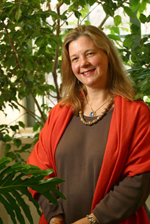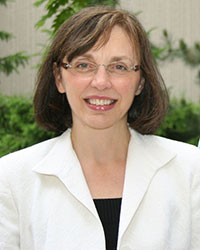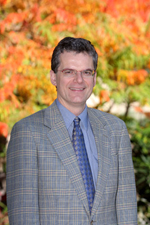Art and Engineering
Preservation and Provenance

In addition to their work in the area of energy and sustainability, Kimberly Gray, professor of civil and environmental engineering and of chemical and biological engineering, and David Dunand, James N. and Margie M. Krebs Professor of Materials Science and Engineering, are part of a collaboration between Northwestern and the Art Institute of Chicago to help conserve and study works of art.
The two organizations have received funding from the Andrew W. Mellon Foundation to link faculty and student experts with conservation scientists to enhance research on items of cultural importance. Projects have included work on Asian art — mainly jades and ancient Chinese bronzes — and studies of artists’ materials and techniques to assist authentication and determine provenance.
Partnerships at Work

Katherine Faber, Walter P. Murphy professor of materials science and engineering, has performed research to determine the mineral composition of ancient Chinese jades, while Dunand has analyzed the metallurgical composition of modern bronze sculptures from the collections of the Art Institute of Chicago and the Philadelphia Museum of Art and has used powerful X-rays from Argonne National Laboratory to investigate the structure and fabrication method of a 2,200-year-old Chinese bronze dagger-axe. Gray, using tiny samples from Georges Seurat’s painting A Sunday on La Grande Jatte, has studied the aging process of the zinc yellow pigment. The group has also explored scientific techniques for examining art and has held several seminars on its work for scientists, curators, and conservators.
The partnership allows McCormick faculty to use their research in new ways. “We are problem solvers at heart,” says Faber. “This partnership brought a whole new set of problems to us, allowing us to look at the past to try to figure out how something was made.”
A Legacy in Metals

For Dunand, the project is a link to his own heritage. “I’m a metallurgist, and my grandfather was also a metallurgist with a wide range of interests, including archaeological materials,” Dunand says. “My father was a curator of a small museum in Geneva that specializes in Asian art. I’ve always been very close to Asian art. Even though I am a scientist, the other part of my brain is active. For me, art is a very important part of life. It makes us human in our highly technological society. Discovery drives the scientist in me, but art allows for emotional expression.”
The partnership with the Art Institute of Chicago provides unique research experiences and shows the broad applications of engineering. “We’re working with beautiful objects, so it’s a natural attraction,” says Faber. “These objects provide an opportunity to attract more people to science through art.”
